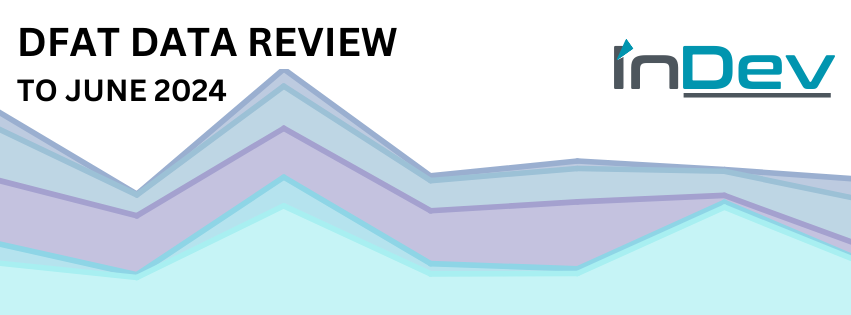Recently, DFAT released their updated 2023-24 contract data and grant data. While always available via the relevant portals, we thought this release was a good time to delve into the DFAT procurement data.
For this analysis, we used data from AusTender, DFAT”s senate releases and Grant Connect. At the start, this data is not rigorous, and there may be some errors in data cleanliness and analysis. This analysis is for information only and we encourage you to download the data directly and review it (I spent far too long at a university to not put that caveat in!).

So far in 2024, there has been just over $900,000,000 in Grants and Contracts. From teh above you can see, a huge amount of that has gone to the Big 4 contracts (Abt, DT, Palladium, Tetra Tech). But, NGO’s have also received a significant portion.
This breakdown is fairly standard across the years. Looking at the data in 6 month batches, since 2020 the Big 4 and NGO’s remained the two core delivery types, though the number of NGO’s is large!

Looking just at contracts that were active since the start of 2024 (either new contracts, or those still active):

Digging further into the breakdown, we can see the top 10 recipients by grants or contracts this year. For Contracts, 2 of the big 4 accounts for over 65%. While for Grants, the largest in the University of Sydney, with 8.5%. The diversity of the grants program is seen with those outside the top 10 making up almost 60%.

But, expanding out, since 2020 there has been some large grant recepients.

Contracts
Going back to the 6 month chart, if we remove the grants, the consolidation with the big 4 contractors is very clear.

Looking at just the Big 4, we see the growth of DT Global as the main actor, and the diminshed scale of Palladium.

Contract Length
As an interesting analysis, we looked at the average length of agreements and the average value. Noting that many of these are individual contracts under once head contact (i.e. there is an overarching agreement with a contractor, then individual tasks are separate contracts).

Tetra Tech has the largest average value, and 2 highest average length, with DT close behind. Abt, Palladium, Alinea and Adam Smith are grouped, with smaller average contracts. This would show the use of multiple shorter agreements, rather than longer-term contracts, or long contracts with more complicated multiple components, demonstrated by Abt having the largest bubble (number of contracts) on the graph.
UNSW has the longest average, but a low value, as research is often note as high financial costs, but very long time periods. Nauru Aid, and Air PNG have very low lengths, but higher average, symptomatic of the costs of air travel.

Looking generally, the average length grew following covid, but has started to drop. While the average value has also dropped from immediately post-covid.
What other insights would you like to see? And should we make this data more accessible? Let us know!


